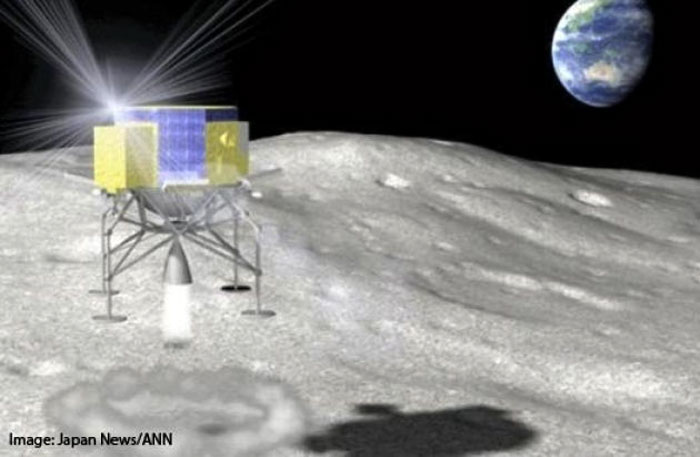.
19.04.2015

The Japan Aerospace Exploration Agency (JAXA) is planning to attempt Japan’s first lunar landing in fiscal 2018, sources close to the project said Sunday.
JAXA has said it will use unmanned probes to study the possible use of materials on the moon as well as its environment, which could pave the way for future manned missions.
JAXA is expected to brief a government panel on the project with the aim of securing funding for mission preparations from the budget for fiscal 2016, which begins next April, the sources said.
The mission involves the experimental Smart Lander for Investigating Moon and would represent Japan’s first lunar exploration attempt since JAXA launched an unmanned orbiter in 2007.
SLIM is likely to be launched on an Epsilon advanced rocket, the sources said.
The SLIM mission is aimed at establishing a method for pinpoint landings that would make it possible to approach a target area with a level of accuracy ranging in the hundreds of meters.
In 2013, a Chinese probe made the world’s first soft landing on the moon in nearly 40 years, joining both the United States and the former Soviet Union as the only countries to achieve the feat.
Only the United States has achieved a manned moon landing.
Quelle: The Japan Times
.
Update: 21.04.2015
.
Japan aims to achieve moon landing in FY2018

The Japan Aerospace Exploration Agency (JAXA) is moving forward with a plan to land an unmanned probe on the moon's surface by as early as fiscal 2018, sources said.
This would make Japan the fourth nation to achieve the feat, following the former Soviet Union, the United States and China.
A moon landing could be a stepping stone toward future explorations of Mars. As part of the mission, the space agency would like to develop high-precision soft landing technology, the sources said.
The plan calls for launching a "SLIM" probe using an Epsilon solid-fuel rocket in fiscal 2018 or 2019. SLIM stands for Smart Lander for Investigating Moon.
JAXA presented its plan Monday to an expert panel that included officials from the Education, Culture, Sports, Science and Technology Ministry.
If approved by the government's space policy committee, the science ministry would likely request funding for the project in its budgetary requests for next fiscal year. Development is expected to cost from ¥10 billion to ¥15 billion, the sources said.
Past moon probes have deviated from their landing targets by several kilometers. But with the SLIM probe, JAXA hopes to achieve a soft landing within about 100 meters of the target site.
Japan launched the Kaguya lunar orbiter, which photographed craters and other features of the moon's surface, in 2007.
The upcoming mission aims to have the SLIM probe photograph the lunar surface just before landing to determine its location based on geographical features and use data from Kaguya to increase its landing precision.
Kaguya discovered a shaft on the lunar surface 60 to 70 meters in diameter and 80 to 90 meters deep that could serve as a site for a future moon base.
The shaft is also a potential landing site for the SLIM probe, the sources said.
In addition to serving as a stepping stone for future Mars missions, a moon landing creates opportunities to find deposits.
China is the most recent country to achieve a lunar landing, doing so in 2013.
Russia, which was the first to do so back in the 1960s, hopes to carry out more missions, and India is aiming to execute a moon landing in the next few years.
Japan showed its prowess in advanced landing technology with the Hayabusa unmanned probe, which landed on the asteroid Itokawa. Cutting-edge technology to collect samples and transport them back to Earth was also developed for Hayabusa.
However, such technology was designed for Itokawa's extremely low gravity environment. The stronger gravitational pull of the moon - about one-sixth of Earth's - could require different technology for controlling the probe.
Landing on the moon could present similar conditions to those on Mars.
In addition to the SLIM probe, a Japanese private-sector team is planning to send a lunar rover to the moon by the end of next year. This mission plans to use a moon rocket and landing craft built by a US company.Speech
Quelle: asiaone
4521 Views
